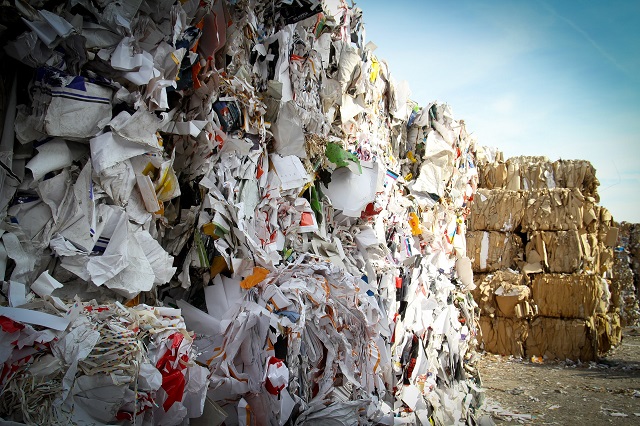
Their goal is an ambitious one: make the world more prosperous by transitioning it from a linear economy that only works from inputs to outputs to a circular economy that loops both together. Instead of designing clothing to be cast off and ultimately end up in a landfill, for example, reuse those old garments in the creation of something new.
While it’s a noble vision from the nonprofit organization Circle Economy, as Marijana Novak, the organization’s data strategist explained during the Daring Cities conference, “unless we explicitly include employment and wellness into the circular economy metrics, we may not get the just transition that we’re working towards.” This challenge is particularly relevant in the global south, she said, where there are many unemployed youth and large informal economies.
In response to this challenge, Circle Economy, which works hand-in-hand with ICLEI’s Circular Development division, has come up with such innovative initiatives as analyzing the job opportunities and challenges of transitioning to the circular economy in particular locales. They work to identify which sectors have the highest material consumption that can potentially be reduced as well as the types of jobs that could be created in conjunction with any new circular initiatives.
“For every city we create a unique rank of sectors that have the greatest potential for circular policy intervention,” Novak explained. They accomplish that in part by looking at the current circular activity and material dependencies of each sector and by examining local employment data and conducting micro simulations to identify which job opportunities exist within each city.
The group has also come up with what they’ve coined the DISRUPT Model. “D” for Design for the Future, for example, which includes design and architecture activities, where there are multiple opportunities to support the circular economy, including reducing construction waste and reusing building materials instead of sending them to landfill sites. “R” stands for Rethink the Business Model, “which concerns rental models or changing the way that materials or products circulate in the economy,” Novak added.
Currently, Circle Economy is conducting this research in Morocco as well as other far-reaching places like Recife, Brussels and Mexico City, in partnership with the UN Environment Programme and ICLEI. “We’re looking to partner with 100 innovative cities,” Novak said.
Burcu Tuncer, head of Circular Development at ICLEI, stressed the need for good planning and evidence-based tools. “Circular development is one of the key leverage points in order to achieve low carbon, resilient and, of course, material efficient development,” she said. She went on to describe it as a “journey” that ICLEI is helping to promote to cities, from actions that deliver moderate impact as a starting point, such as avoiding the dumping and littering of materials, to progressively more impactful measures like zero waste production and encouraging renting or sharing instead of buying – everything from workshop power tools to bicycles.
Tuncer pointed to the many challenges along this pathway, such as in the city of Jaipur, India, where textile production is challenging to monitor because families often work in the back of their homes. “So it’s really difficult to account for them…or talk to them about circularity.” Or in Cairo, which is already involved in waste management, “but maybe it’s not done fairly or in healthy conditions.”
Alejandra López Rodríguez, director of policy planning and coordination with the Mexico City Ministry of Environment, said they currently face a host of environmental challenges that include water scarcity, loss of naturally protected areas, poor air quality and a high volume of waste generation. With respect to the latter, 13,000 tons of solid waste goes into landfill sites daily, 46% of which is organic. And almost half of all waste comes from residences.
“This high volume of waste generation is not only associated with high environmental costs, but also with a lot of social costs,” said Rodríguez. Exacerbating these problems is that COVID-19 has led to the loss of over 12 million jobs, according to Rodríguez, a number that could reach as high as 24 million before the pandemic is over, or 44% of total employment in Mexico. “And women and young people have been hardest hit,” she said.
Mexico City has a zero waste circular economy pilot program with Circle Economy, a multi-faceted initiative that includes everything from significantly reducing single-use plastics to the goals of reusing 6,000 tons of construction waste, increasing recycling by 50% and increasing energy generation from solid waste. Considering both the city’s challenges as well as their newly established circular goals, Rodríguez sees the project as critical to embracing the mindset of building back better and creating new, desirable jobs along the way.
“We of course want to see the results of the [Circle Economy] analysis, to really look into the sectors that have the highest potential and job creation,” Rodríguez said. “We have the opportunity to build shorter, more sustainable supply chains…which opens the opportunity to develop areas of the city and to focus development on populations that have been historically marginalized. So we can have more inclusive development through this approach.”
In many respects, Rodríguez said, the climate crisis is a people problem. And now, with efforts under way, “we need to bring people in…to the solution…and build back better based on the circular economy.”
The Daring Cities conference wraps up on October 28 with the Moving Forward session, which focuses on how cities, towns and regions can better cope with climate change. The line-up for this complementary session (register at the link provided) includes Bonn Mayor Ashok Sridharan, Montreal Mayor Valerie Plant and Under-Secretary-General of the United Nations Ibrahim Thiaw.
Mark Wessel is an urban journalist and public speaker who profiles unique city initiatives tied to sustainability, resiliency and quality of living that other communities can learn from. In addition to TheCityFix, his work has appeared in Next City, Municipal World, Cities Today and the Urban Future ‘City Changers’ blog. He also writes a regular Green Living column for Postmedia, Canada’s largest newspaper chain.








